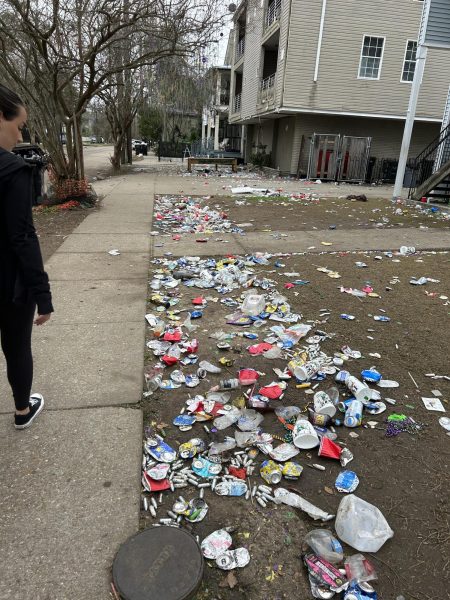
Mardi Gras beads are a quintessential part of the New Orleans yearly festivities. Parade attendees often don full neckfuls of beads at one time. But these glittering necklaces have a toxic truth behind them. From dangerous chemicals, to pollution and government sanitation expenses, these beads are a destructive force for the New Orleans environment.
A recent study by The Ecology Center tested 66 components in the 56 different necklaces and garlands. It found most of them contained high levels of bromine, antimony and lead. Most of the beads also contained levels of chlorine consistent with the presence of chlorinated flame retardants, some of which have been linked to cancer. These toxic chemicals can easily be absorbed through the skin, even for the short periods parade-goers wear them for.
Beads have also become a waste and sanitation issue, with tons of the discarded, unwanted plastic beads littering the streets, clogging storm drains and polluting bodies of water. Cleaning up the discarded beads is costly for the New Orleans local government. According to the Earth Island Journal, when the parade season ended in 2014, the New Orleans city government spent $1.5 million to pick up about 1,500 tons of Mardi Gras-induced waste, consisting mostly of beads.
The New Orleans Sanitation Department has made an effort to recycle Mardi Gras beads. The Arc of Greater New Orleans works with the department to collect unwanted Mardi Gras throws. The organization then employs people with intellectual disabilities to sort through, repackage and resell the throws at locations all over the metropolitan area. Tulane University also provides Mardi Gras bead recycling locations through ArcGNO.
Production of the beads is another environmental and ethical concern. Young Chinese workers, often children, are the ones who melt the beads used for Mardi Gras, regularly in poor working conditions with very little pay, according to the documentary “Mardi Gras: Made in China.” One worker in the documentary suggested the price of one inexpensive necklace might be the equivalent of three months of pay for her.
Plastic beads weren’t always the proverbial throw of Mardi Gras celebrations. Up until the 1960s, the beads were made of Czechoslovakian glass. According to The Ecology Center, throws also included “food items, such as gold-painted walnuts, sugar-coated almonds, and coconuts.”
Some krewes have come up with creative alternatives to the plastic beads such as stuffed animals, food and even tooth brushes. Scientists at Louisiana State University have also developed biodegradable beads made from algae.
In an LSU Journal of Energy Law and Resources article, Anne Boudreux proposed that New Orleans adopt an ordinance imposing a limit on the number of plastic beads allowed to be thrown by each parade. This solution will both regulate the quantity and quality of beads thrown, as krewes that have reached their limit will have to look for other alternative non-plastic throws.
For students interested in reducing the environmental impact of their Mardi Gras throws, consider some of the following drop-off locations to recycle beads.


